
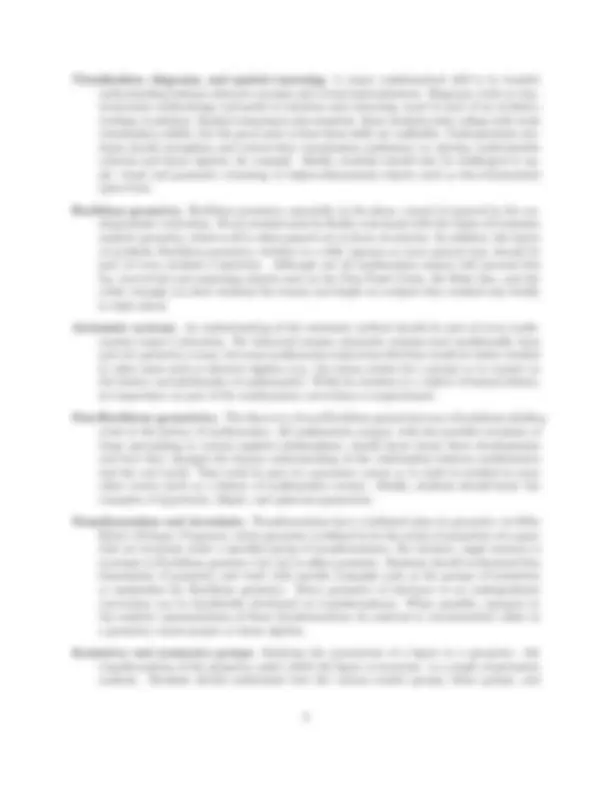
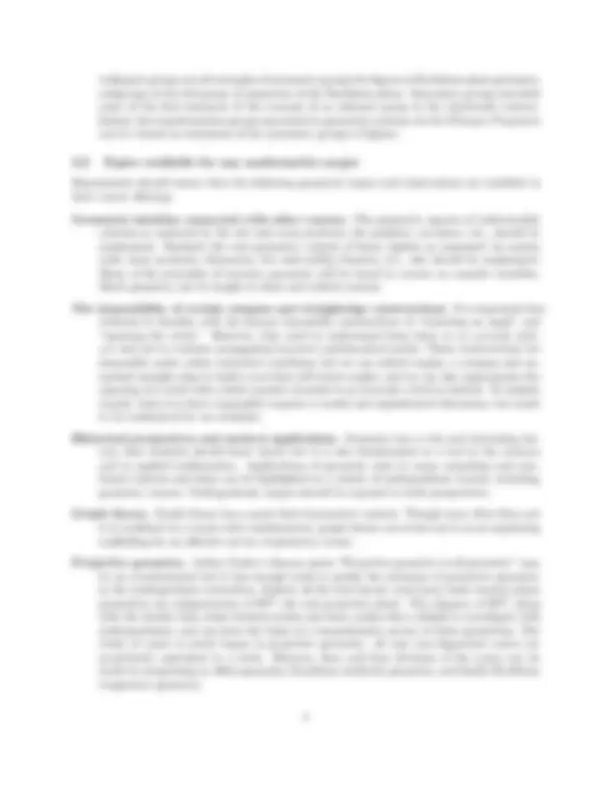
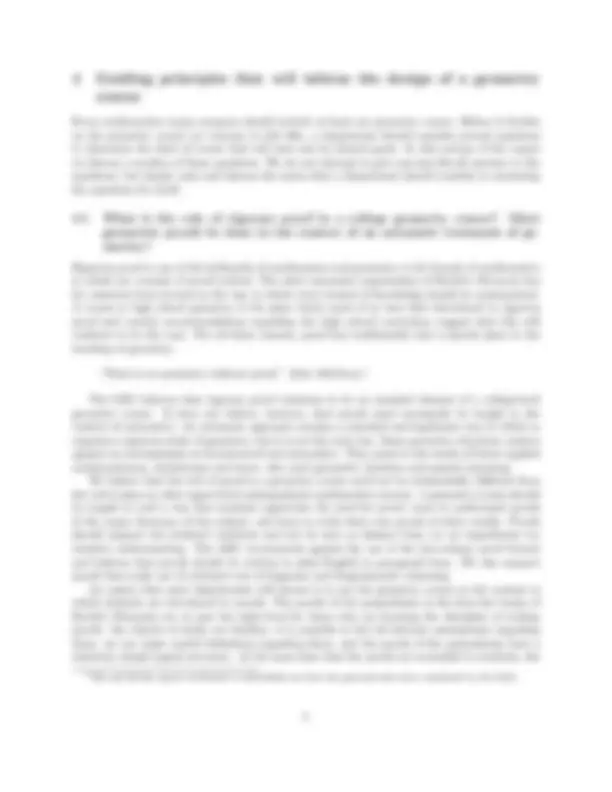
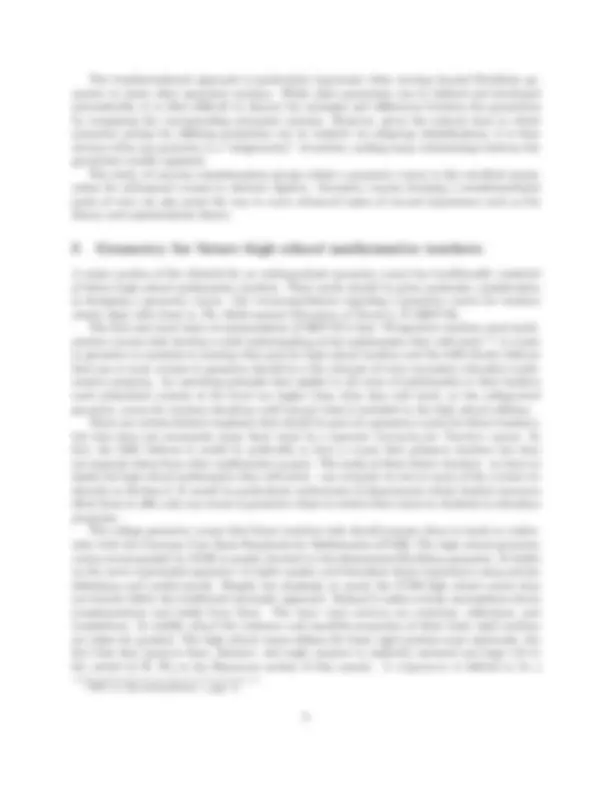
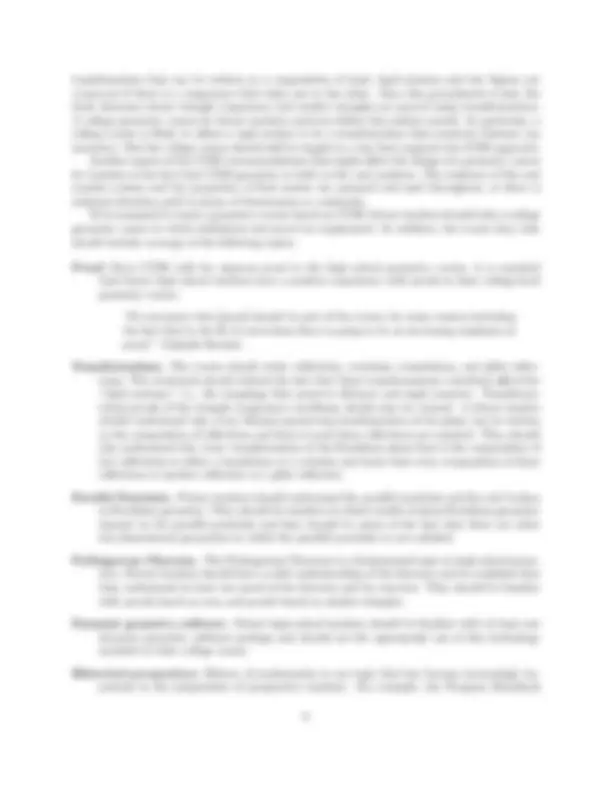
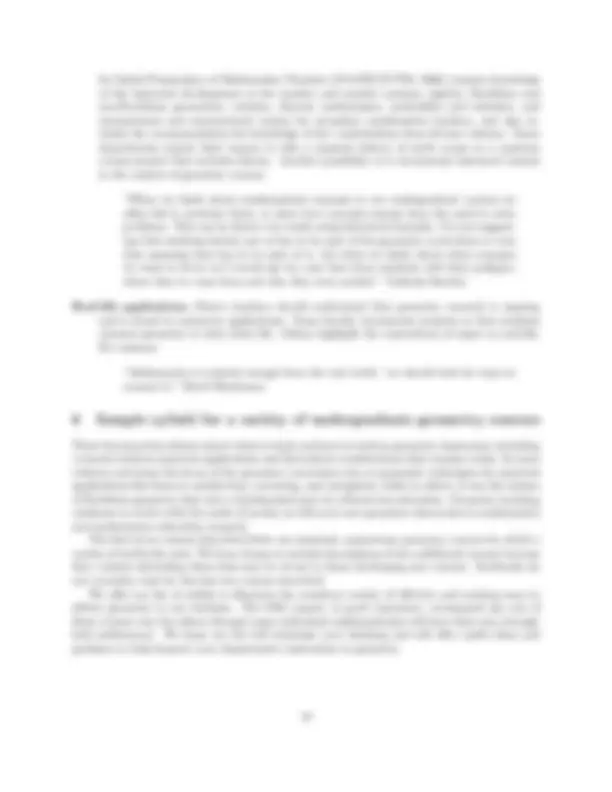
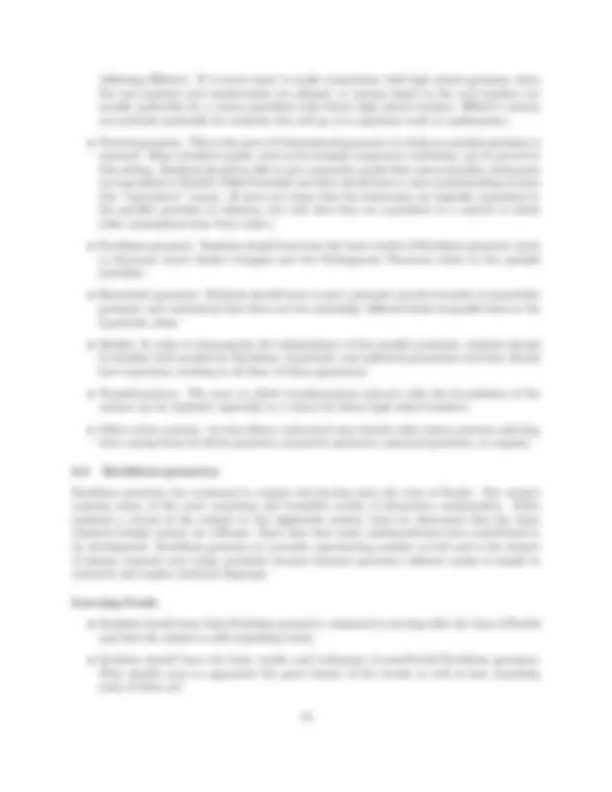
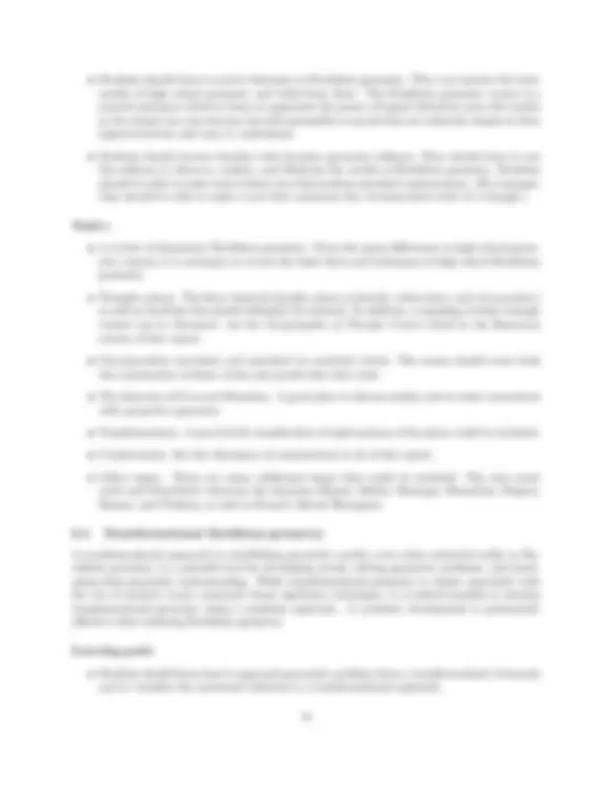
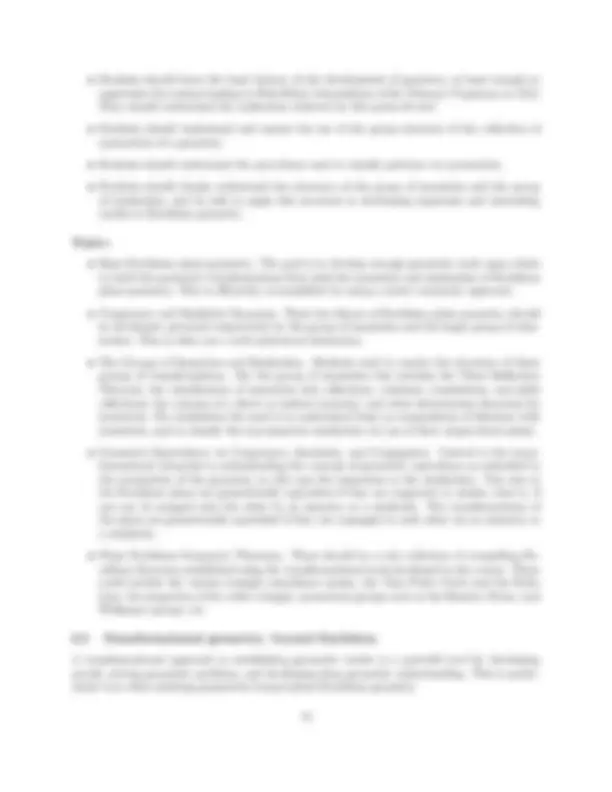
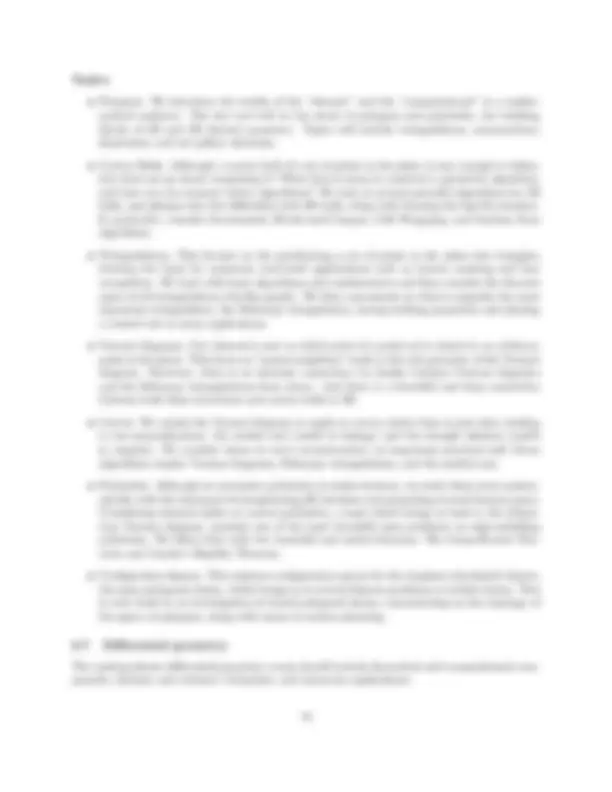
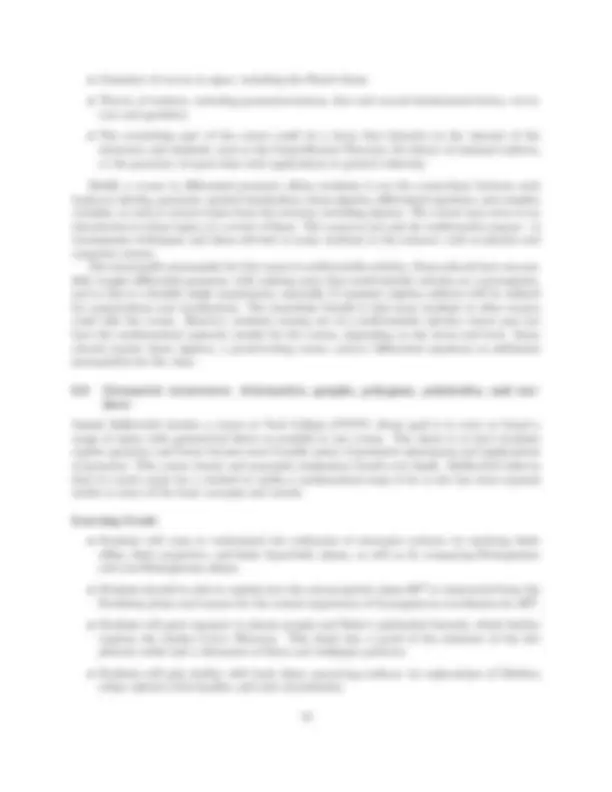
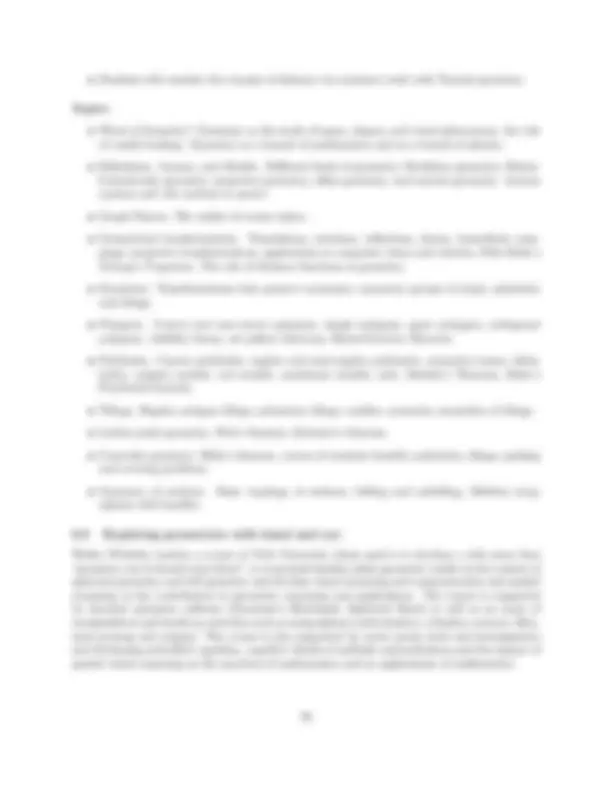
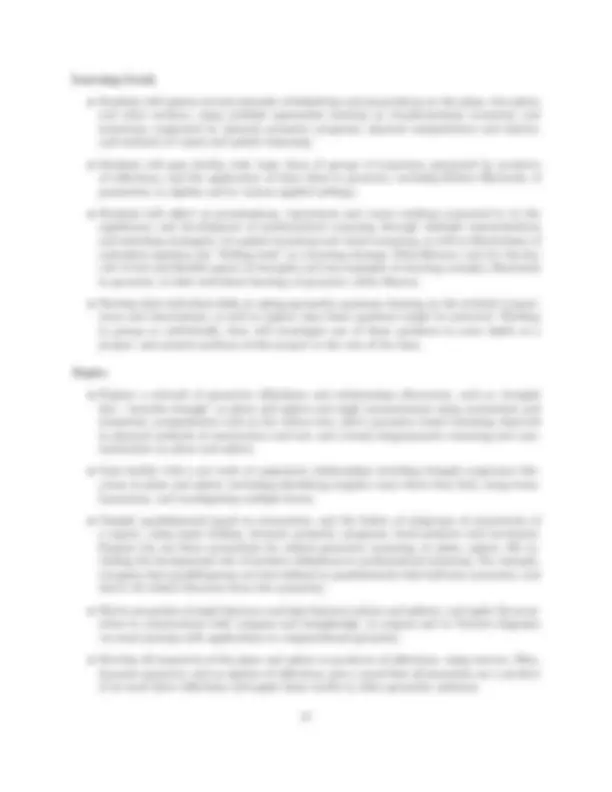
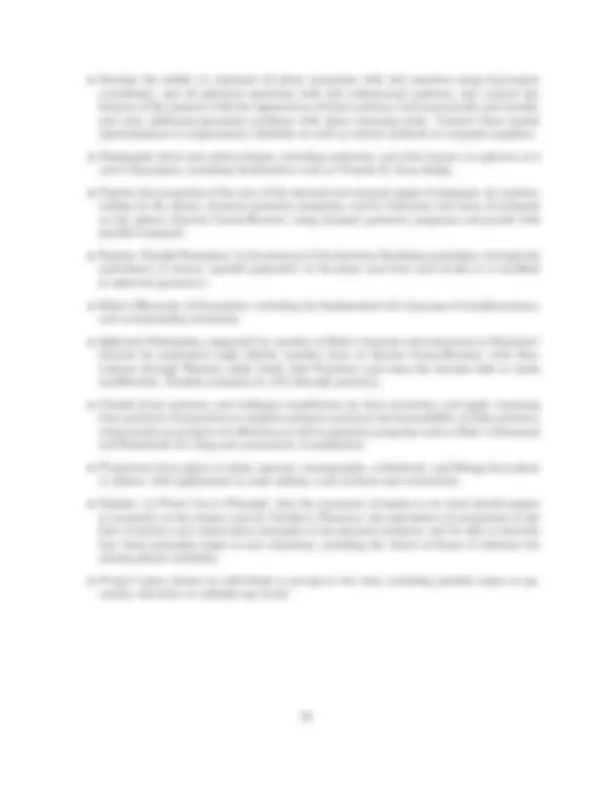
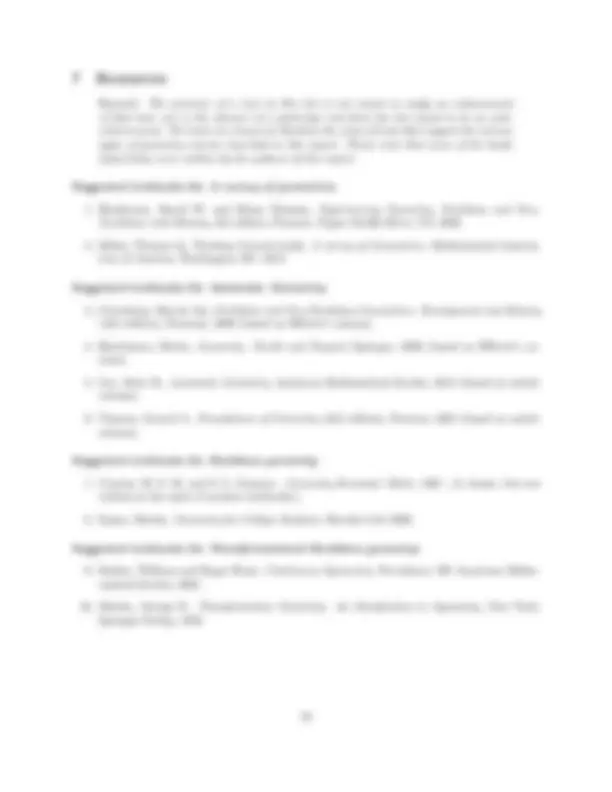
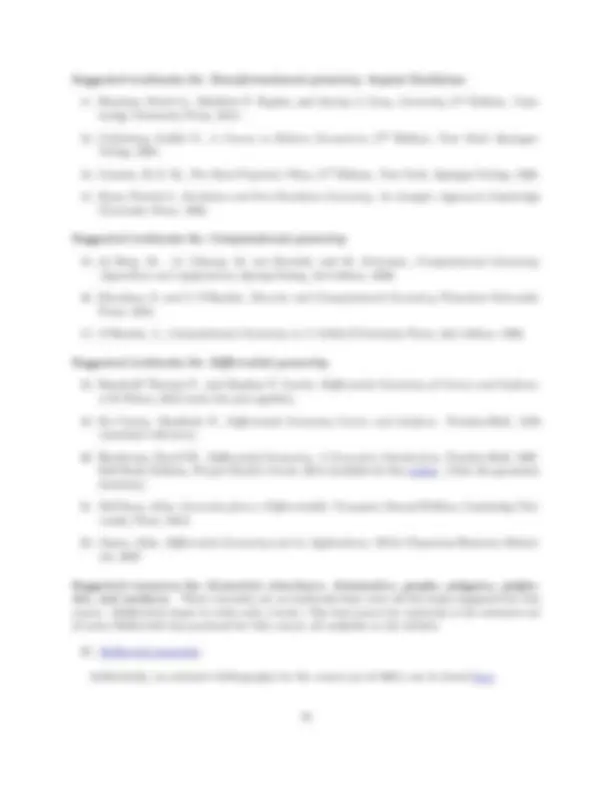
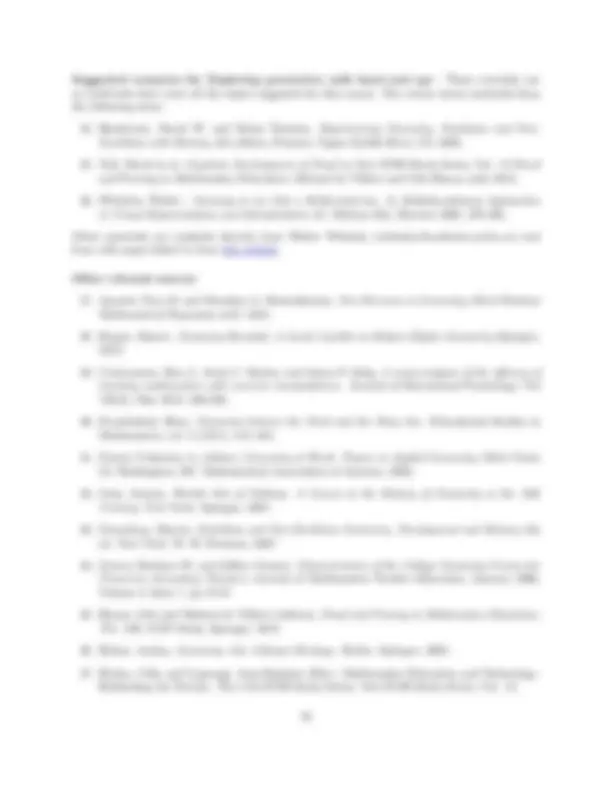
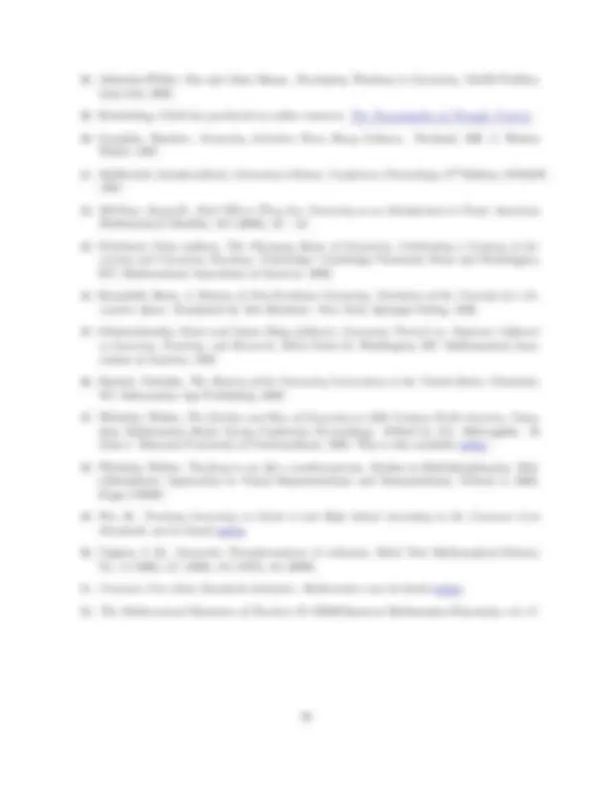


Study with the several resources on Docsity

Earn points by helping other students or get them with a premium plan


Prepare for your exams
Study with the several resources on Docsity

Earn points to download
Earn points by helping other students or get them with a premium plan
Community
Ask the community for help and clear up your study doubts
Discover the best universities in your country according to Docsity users
Free resources
Download our free guides on studying techniques, anxiety management strategies, and thesis advice from Docsity tutors
Once this groundwork is laid, the basic theorems about triangle congruence and similar triangles are proved using transformations. A college geometry course for ...
Typology: Summaries
1 / 26

This page cannot be seen from the preview
Don't miss anything!



















Gerard Venema, Calvin College (Chair) William Barker, Bowdoin College Frank Farris, Santa Clara University Sarah Greenwald, Appalachian State University
The Geometry Study Group (GSG) was charged by the CUPM Steering Committee with making recommendations about geometry in the undergraduate mathematics curriculum. We have three basic recommendations: 1) certain geometric concepts and methods belong in the education of every mathematics major, whether that content is delivered in a geometry course or not, 2) ev- ery undergraduate mathematics program should include at least one course devoted primarily to geometry, and 3) the curricular needs in geometry of future high school mathematics teachers are best satisfied within geometry courses for mathematics majors, not by a separate Geometry for Teachers course.
Every mathematics major program should include substantial geometric content. As pointed out in many documents over the past twenty-five years, instruction in geometric mathematics has suffered from neglect in the recent past. With the “push to calculus,” many students never recover from a high school education that skips too quickly over geometry. This must be remedied. Geometry, in a centuries-long interplay with algebra, is one of the vital halves of mathematics, and this is just as true today as in ancient times. The value of geometry to students cannot be contested. In no other field can students make such a strong connection between intuition, discovery, proof, and applications. Geometry is built on experiences in the physical and artistic worlds, and in turn is an essential skill in many areas of applied mathematics. Without geometry, students will suffer when it comes time to apply theory to physical situations. And the geometric viewpoint is central to many current areas of inquiry, from climate science to the mathematics of film-making. To help departments respond to our call, we offer a list in Section 3 of the concepts and methods from geometry that should be part of the education of every undergraduate mathematics major. Some topics can be covered naturally in courses not exclusively devoted to geometry. These ideas are offered to help institutions determine for themselves how to ensure that all mathematics majors are most appropriately engaged with geometry.
Every mathematics department should offer at least one undergraduate course devoted primarily to geometry. There will probably never be a consensus on what that course should cover. However, in Section 6 we offer sample syllabi for some of the many valid course choices that institutions might
make. We also outline in Section 4 some of the important issues institutions should consider as they decide which geometry course, or courses, to offer.
The GSG recognizes that geometry plays a special role in the education of future high school mathematics teachers. Teaching teachers is vital, but also vital is our call not to reduce geometry to something viewed as necessary only for teacher preparation. In particular, the GSG believes that future high school mathematics teachers are best served by appropriately designed geometry courses for the general mathematics major that also take into consideration the needs of secondary mathematics teachers, not by courses specifically designed only for future teachers. In Section 5 we discuss requirements for the preparation of teachers and give suggestions of how they can be met within courses for the general major.
2 Process
The GSG studied geometry in the undergraduate curriculum in several phases. In addition to internal discussions and a survey of the literature, the group invited geometry instructors to respond to an online survey. We also conducted extensive interviews with a number of respected geometry educators. Neither the survey nor the interviews in any way represents a random sample of opinion about geometry and our report is not meant merely to summarize the opinions of others. Rather, we drew from the ideas and opinions expressed in the survey and interviews to inform our discussion. The report represents our considered opinions, based on consultation with the larger community. The following geometers were personally interviewed by the GSG: Jerry Alexanderson, Thomas Banchoff, Thomas Cecil, Herb Clemens, Scott Crass, Carolyn Gordon, Robin Hartshorne, David Henderson, Roger Howe, Joseph Malkevitch, John McCleary, Thomas Sibley, Nathalie Sinclair, and Walter Whiteley.
3 Concepts and methods from geometry that every mathematics
major should learn
Most mathematical concepts involve both number and space, embodying the deep interplay between algebra and geometry. The GSG believes that the geometric/spatial side of mathematics does not receive enough emphasis in the current undergraduate curriculum. In an effort to help departments achieve a more balanced treatment of both sides of mathematics, we offer the following two lists of geometric concepts and methods. The first list consists of items that we believe should be learned by all undergraduate mathematics majors. The second list consists of additional topics that should be available to all undergraduate mathematics majors.
We think it is critical that every undergraduate mathematics major program include the following geometric topics and we recommend that each department review its course offerings to ensure that their mathematics majors do not miss them. While these topics naturally fit in a geometry course, some could just as easily be included in other mathematics courses.
wallpaper groups are all examples of symmetry groups for figures in Euclidean plane geometry, subgroups of the full group of isometries of the Euclidean plane. Symmetry groups provided some of the first instances of the concept of an abstract group in the nineteenth century. Indeed, the transformation groups associated to geometric systems via the Erlanger Programm can be viewed as extensions of the symmetry groups of figures.
Departments should ensure that the following geometric topics and observations are available in their course offerings.
Geometric intuition connected with other courses. The geometric aspects of multivariable calculus as captured by the dot and cross products, the gradient, curvature, etc., should be emphasized. Similarly the vast geometric content of linear algebra as expressed via matrix rank, inner products, dimension, the rank-nullity theorem, etc., also should be emphasized. Many of the principles of inversive geometry will be found in courses on complex variables. Much geometry can be taught in these and related courses.
The impossibility of certain compass and straightedge constructions. It is important that students be familiar with the famous impossible constructions of “trisecting an angle” and “squaring the circle.” However, they need to understand these facts in an accurate fash- ion and not to continue propagating incorrect mathematical myths. These constructions are impossible under rather restrictive conditions but we can indeed employ a compass and un- marked straight edge to build a tool that will trisect angles, and we can also approximate the squaring of a circle with a finite number of points to as accurate a level as desired. To explain exactly what it is that’s impossible requires a careful and sophisticated discussion, but needs to be understood by our students.
Historical perspectives and modern applications. Geometry has a rich and interesting his- tory that students should know about but it is also fundamental as a tool in the sciences and in applied mathematics. Applications of geometry arise in many surprising and new- found contexts and these can be highlighted in a variety of undergraduate courses, including geometry courses. Undergraduate majors should be exposed to both perspectives.
Graph theory. Graph theory has a great deal of geometric content. Though more often than not it is combined in a course with combinatorics, graph theory can in fact serve as an organizing scaffolding for an effective survey of geometry course.
Projective geometry. Arthur Cayley’s famous quote “Projective geometry is all geometry” may be an overstatement but it has enough truth to justify the inclusion of projective geometry in the undergraduate curriculum. Indeed, all the best known (and many lesser known) plane geometries are subgeometries of RP^2 , the real projective plane. The elegance of RP^2 , along with the duality that exists between points and lines, makes this a delight to investigate with undergraduates, and can form the basis of a comprehensive survey of other geometries. The study of conics is nicely begun in projective geometry: all real, non-degenerate conics are projectively equivalent to a circle. However, finer and finer divisions of the conics can be made by progressing to affine geometry, Euclidean similarity geometry, and finally Euclidean congruence geometry.
4 Guiding principles that will inform the design of a geometry
course
Every mathematics major program should include at least one geometry course. Before it decides on the geometry course (or courses) it will offer, a department should consider several questions to determine the kind of course that will best suit its desired goals. In this section of the report we discuss a number of these questions. We do not attempt to give one-size-fits-all answers to the questions, but simply raise and discuss the issues that a department should consider in answering the questions for itself.
Rigorous proof is one of the hallmarks of mathematics and geometry is the branch of mathematics in which our concept of proof evolved. The strict axiomatic organization of Euclid’s Elements has for centuries been revered as the way in which every branch of knowledge should be systematized. A course in high school geometry is the place where most of us were first introduced to rigorous proof and current recommendations regarding the high school curriculum suggest that this will continue to be the case. For all these reasons, proof has traditionally had a special place in the teaching of geometry.
“There is no geometry without proof.” John McCleary.^1
The GSG believes that rigorous proof continues to be an essential element of a college-level geometry course. It does not believe, however, that proofs must necessarily be taught in the context of axiomatics. An axiomatic approach remains a standard and legitimate way in which to organize a rigorous study of geometry, but it is not the only way. Some geometry educators caution against an overemphasis on formal proof and axiomatics. They point to the needs of future applied mathematicians, statisticians and more, who need geometric intuition and spatial reasoning. We believe that the role of proof in a geometry course need not be substantially different from the role it plays in other upper-level undergraduate mathematics courses. A geometry course should be taught in such a way that students appreciate the need for proof, come to understand proofs of the major theorems of the subject, and learn to write their own proofs of other results. Proofs should support the student’s intuition and not be seen as distinct from (or an impediment to) intuitive understanding. The GSG recommends against the use of the two-column proof format and believes that proofs should be written in plain English in paragraph form. We also support proofs that make use of extensive use of diagrams and diagrammatic reasoning. An option that some departments will choose is to use the geometry course as the context in which students are introduced to proofs. The proofs of the propositions in the first few books of Euclid’s Elements are at just the right level for those who are learning the discipline of writing proofs: the objects of study are familiar, it is possible to list all relevant assumptions regarding them, we can make careful definitions regarding them, and the proofs of the propositions have a relatively simple logical structure. At the same time that the proofs are accessible to students, the
(^1) This and further quotes attributed to individuals are from the presonal interviews conducted by the GSG.
is tenuous at best. Students must eventually transition from concrete (hands-on) or visual representations to internalized abstract representations. The crucial steps in making such transitions are not clearly understood at present and need to be a focus of learning and curriculum research.
Other researchers and teachers counter the claims of insufficient evidence by citing a vast amount of educational literature (see for instance, [29], [34], [35], [37], [45], [48]). The GSG recommends the use of IGSs and other hands-on activities. While we agree that there is more to be learned about how students transfer knowledge from experiential to abstract, we are persuaded by the existing literature. A huge array of print and online resources can inform teachers who want to incorporate technology or manipulatives into their geometry classes. Examples can be found in the resource section of this report. Finally, we note that new technologies have historically affected the teaching of geometry, and this is likely to continue in the future. For example, spherical trigonometry, once a staple of a geometry education, was virtually eliminated from the curriculum in the 20th century because navigational computations were now relegated to machines. On the other hand, the rise of video gaming and computer graphics in film makes knowledge of topics like projective geometry and computational geometry a marketable job skill. Twenty years from now, we would like to know: What new skills and understandings might students need to take advantage of new technologies?
Felix Klein, in the written version of his 1872 Inaugural Lecture as Professor at Erlangen University, defined geometry as the study of properties of a space that are invariant under a designated group of transformations, the “symmetries” of the geometry. This definition, which provided a unified intellectual structure for all the geometric systems that had appeared by the mid-19th century, had profound effects on the directions of subsequent geometric research. Known as the Erlanger Programm, this framework remains today as the definitive definition of a geometric system, both for its clean intellectual elegance and its practical applicability in mathematics and the physical sciences. This leads us to recommend that any first course in undergraduate geometry have at least some discussion of transformations and the Erlanger Programm. Different departments will choose how central a role this should play, and there is no one simple answer; it will vary depending on the geometric topics under consideration, and also on the beliefs and preferences of the faculty. As will be seen in our collection of sample course syllabi in Section 6, the theory of transformations can be developed utilizing either a synthetic or an analytic approach. Most geometric notions (such as congruence in Euclidean geometry) are elegantly defined by using the designated symmetries of the geometry. Additionally, thinking transformationally—- “seeing” the movement of one figure onto another via a symmetry motion—can enhance the in- tuitive understanding of a problem as well as provide rigorous techniques of proof. Indeed, as will be discussed in Section 5, the Common Core State Standards for Mathematics [CCSS] are increasing the focus on the transformational approach to Euclidean geometry, another reason to mirror this emphasis at the undergraduate level. We believe that any first course in undergradu- ate geometry should develop enough transformational geometry to support the K–12 curriculum recommendations in the CCSS.
The transformational approach is particularly important when moving beyond Euclidean ge- ometry to study other geometric systems. While other geometries can be defined and developed axiomatically, it is often difficult to discern the analogies and differences between the geometries by comparing the corresponding axiomatic systems. However, given the natural ways in which symmetry groups for differing geometries can be realized via subgroup identifications, it is then obvious when one geometry is a “subgeometry” of another, making many relationships between the geometries readily apparent. The study of concrete transformation groups within a geometry course is also excellent prepa- ration for subsequent courses in abstract algebra. Geometry courses stressing a transformational point of view can also point the way to more advanced topics of current importance such as Lie theory and representation theory.
5 Geometry for future high school mathematics teachers
A major portion of the clientele for an undergraduate geometry course has traditionally consisted of future high school mathematics teachers. Their needs should be given particular consideration in designing a geometry course. Our recommendations regarding a geometry course for teachers closely align with those in The Mathematical Education of Teachers II [MET II]. The first and most basic recommendation of MET II is that “Prospective teachers need math- ematics courses that develop a solid understanding of the mathematics they will teach.”^2 A course in geometry is essential to meeting that goal for high school teachers and the GSG firmly believes that one or more courses in geometry should be a key element of every secondary education math- ematics program. An operating principle that applies to all areas of mathematics is that teachers need substantial content at the level one higher than what they will teach, so the college-level geometry course for teachers should go well beyond what is included in the high school syllabus. There are certain distinct emphases that should be part of a geometry course for future teachers, but that does not necessarily mean there must be a separate Geometry for Teachers course. In fact, the GSG believes it would be preferable to have a course that prepares teachers but does not separate them from other mathematics majors. The needs of these future teachers—to learn in depth the high school mathematics they will teach—can certainly be met in many of the courses we describe in Section 6. It would be particularly unfortunate if departments whose limited resources allow them to offer only one course in geometry chose to restrict that course to students in education programs. The college geometry course that future teachers take should prepare them to teach in confor- mity with the Common Core State Standards for Mathematics [CCSS]. The high school geometry course recommended by CCSS is mostly devoted to two-dimensional Euclidean geometry. It builds on the more experiential geometry of earlier grades and formalizes those experiences using precise definitions and careful proofs. Despite the emphasis on proof, the CCSS high school course does not strictly follow the traditional axiomatic approach. Instead it makes certain assumptions about transformations and builds from there. The basic rigid motions are rotations, reflections, and translations. In middle school the existence and essential properties of these basic rigid motions are taken for granted. The high school course defines the basic rigid motions more rigorously; the fact that they preserve lines, distance, and angle measure is explicitly assumed (see page 110 in the article by H. Wu in the Resources section of this report). A congruence is defined to be a
(^2) MET II, Recommendation 1, page 17.
for Initial Preparation of Mathematics Teachers (NCATE/NCTM, 2003) requires knowledge of the historical development in the number and number systems, algebra, Euclidean and non-Euclidean geometries, calculus, discrete mathematics, probability and statistics, and measurement and measurement system for secondary mathematics teachers, and also in- cludes the recommendation for knowledge of the ‘contributions from diverse cultures.’ Some departments require their majors to take a separate history of math course or a capstone course/project that includes history. Another possibility is to incorporate historical content in the context of geometry courses.
“When we think about mathematical concepts in our undergraduate courses we often fail to motivate them, to show how concepts emerge from the need to solve problems. This can be shown very easily using historical examples. I’m not suggest- ing that studying history per se has to be part of the geometry curriculum or even that assessing that has to be part of it, but when we think about what concepts we want to focus on I would opt for ones that show students well their pedigree, where they’ve come from and why they were needed.” Nathalie Sinclair
Real-life applications. Future teachers should understand that geometry research is ongoing and is found in numerous applications. Some faculty incorporate projects so that students research geometry in their daily life. Others highlight the connections of topics to real-life. For instance
“Mathematics is isolated enough from the real world—we should look for ways to connect it.” David Henderson
6 Sample syllabi for a variety of undergraduate geometry courses
There has long been debate about what to teach and how to teach in geometry classrooms, including a tension between practical applications and theoretical considerations that remains today. In some cultures and times the focus of the geometry curriculum was on geometric techniques for practical applications like those in architecture, surveying, and navigation, while in others, it was the axioms of Euclidean geometry that were a fundamental part of a liberal arts education. Geometry teaching continues to evolve with the needs of society as well as to new geometric discoveries in mathematics and mathematics education research. The first seven courses described below are standard, mainstream geometry courses for which a variety of textbooks exist. We have chosen to include descriptions of two additional courses because they contain interesting ideas that may be of use to those developing new courses. Textbooks do not currently exist for the last two courses described. We offer our list of syllabi to illustrate the wondrous variety of effective and exciting ways to deliver geometry to our students. The GSG cannot, in good conscience, recommend any one of these courses over the others (though many individual mathematicians will have their own strongly held preferences). We hope our list will stimulate your thinking and will offer useful ideas and guidance to help improve your department’s instruction in geometry.
“Students have to know that geometry is not just one thing. They should understand the distinction between analytic and synthetic approaches, know basics about spherical, hyperbolic, and Euclidean geometries, and, ideally, understand that they are all part of projective geometry.” Thomas Banchoff
“The power of geometry comes from being able to think new thoughts and see connec- tions as a result of wide exposure.” Tom Sibley
This course aims for breadth, while sacrificing some depth. It assumes that students do remem- ber some of the Euclidean geometry they learned in high school. The level of rigor is purposefully sacrificed in order to develop intuition and to cover some of the breadth of geometry. In addition to the seven topics listed, the course asks students to carry out an individual discovery project. There is no shortage of possibilities for these: finite geometries, 4-dimensional Euclidean geometry, taxicab geometry,....
Learning Goals:
Topics:
(following Hilbert). It is much easier to make connections with high school geometry when the real numbers and measurement are allowed, so axioms based on the real numbers are usually preferable for a course populated with future high school teachers. Hilbert’s axioms are probably preferable for students who will go on to graduate work in mathematics.
Euclidean geometry has continued to expand and develop since the time of Euclid. The subject contains many of the most surprising and beautiful results of elementary mathematics. Euler initiated a revival of the subject in the eighteenth century when he discovered that the three classical triangle centers are collinear. Since that time many mathematicians have contributed to its development. Euclidean geometry is currently experiencing another revival and is the subject of intense research even today, probably because dynamic geometry software makes it simple to construct and explore intricate diagrams.
Learning Goals:
Topics:
A transformational approach to establishing geometric results, even when restricted solely to Eu- clidean geometry, is a powerful tool for developing proofs, solving geometric problems, and devel- oping deep geometric understanding. While transformational geometry is closely associated with the use of analytic (most commonly linear algebraic) techniques, it is indeed possible to develop transformational geometry using a synthetic approach. A synthetic development is particularly effective when studying Euclidean geometry.
Learning goals:
The transformational approach allows a clean and elegant method for comparing different ge- ometries via containment relationships between the different groups of symmetry transformations. For example, similarity geometry is a subgeometry of affine geometry, which in turn is a subgeom- etry of projective geometry. This allows for a logical approach to the classification of invariants in each geometric system, as well as for a clearer understanding of how to assign particular theorems to their “proper” geometries. When focusing on geometries beyond Euclidean we feel that an analytic approach via linear algebra is probably more effective than a synthetic approach.
Learning goals:
Topics:
Although geometry is as old as mathematics itself, discrete geometry only fully emerged in the 20th century, and computational geometry was only christened in the late 1970s. The terms “discrete” and “computational” fit well together as the geometry must be discretized in preparation for com- putations. “Discrete” here means concentration on finite sets of points, lines, triangles, and other geometric objects, and is used to contrast with “continuous” geometry, for example, smooth sur- faces. Although the two endeavors were growing naturally on their own, it has been the interaction between discrete and computational geometry that has generated the most excitement, with each advance in one field spurring an advance in the other. The interaction also draws upon two tra- ditions: theoretical pursuits in pure mathematics and applications-driven directions, often arising in computer science. The confluence has made the topic an ideal bridge between mathematics and computer science.
Learning Goals: The field has expanded greatly since its origins and now the new connections to areas of mathematics (such as algebraic topology) and new application areas (such as data mining) seems only to be accelerating.
Ideally a course in differential geometry allows students to see the connections between such topics as calculus, geometry, spatial visualization, linear algebra, differential equations, and complex variables, as well as various topics from the sciences, including physics. The course may serve as an introduction to these topics or a review of them. The course is not only for mathematics majors—it encompasses techniques and ideas relevant to many students in the sciences, such as physics and computer science. One inescapable prerequisite for this course is multivariable calculus. Some schools have success- fully taught differential geometry with nothing more than multivariable calculus as a prerequisite, and so this is a feasible single requirement, especially if computer algebra software will be utilized for computations and visualization. The immediate benefit is that more students in other majors could take the course. However, students coming out of a multivariable calculus course may not have the mathematical maturity needed for the course, depending on the focus and level. Some schools require linear algebra, a proof-writing course, and/or differential equations as additional prerequisites for the class.
Joseph Malkevitch teaches a course at York College (CUNY) whose goal is to cover as broad a range of topics with geometrical flavor as possible in one course. The desire is to have students explore geometry and hence become more broadly aware of geometric phenomena and applications of geometry. This course clearly and purposely emphasizes breath over depth. Malkevitch believes that it’s much easier for a student to tackle a mathematical topic if he or she has been exposed earlier to some of the basic concepts and results.
Learning Goals:
Topics:
Walter Whiteley teaches a course at York University whose goal is to develop a wide sense that “geometry can be found everywhere”, to re-present familiar plane geometric results in the context of spherical geometry and 3-D geometry and develop visual reasoning and communication and spatial reasoning as key contributors to geometric reasoning and applications. The course is supported by dynamic geometry software (Geometer’s Sketchpad, Spherical Easel) as well as an array of manipulatives and hands-on activities such as using spheres (with elastics), cylinders, mirrors, Mira, sand pouring and origami. The course is also supported by active group work and investigations and developing embodied cognition, cognitive blends of multiple representations and the impact of spatial visual reasoning on the practices of mathematics and on applications of mathematics.